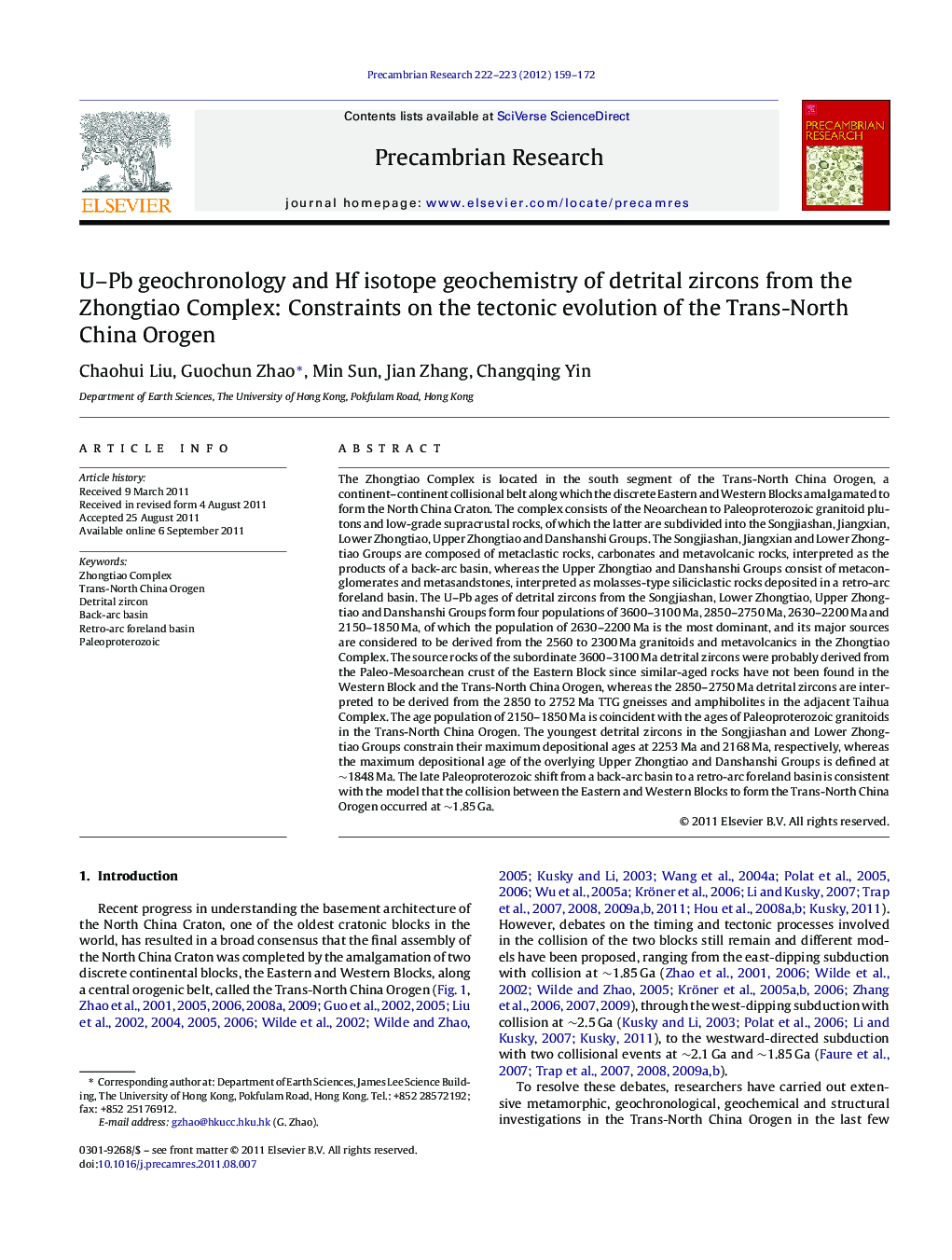| Article ID | Journal | Published Year | Pages | File Type |
|---|---|---|---|---|
| 4723447 | Precambrian Research | 2012 | 14 Pages |
The Zhongtiao Complex is located in the south segment of the Trans-North China Orogen, a continent–continent collisional belt along which the discrete Eastern and Western Blocks amalgamated to form the North China Craton. The complex consists of the Neoarchean to Paleoproterozoic granitoid plutons and low-grade supracrustal rocks, of which the latter are subdivided into the Songjiashan, Jiangxian, Lower Zhongtiao, Upper Zhongtiao and Danshanshi Groups. The Songjiashan, Jiangxian and Lower Zhongtiao Groups are composed of metaclastic rocks, carbonates and metavolcanic rocks, interpreted as the products of a back-arc basin, whereas the Upper Zhongtiao and Danshanshi Groups consist of metaconglomerates and metasandstones, interpreted as molasses-type siliciclastic rocks deposited in a retro-arc foreland basin. The U–Pb ages of detrital zircons from the Songjiashan, Lower Zhongtiao, Upper Zhongtiao and Danshanshi Groups form four populations of 3600–3100 Ma, 2850–2750 Ma, 2630–2200 Ma and 2150–1850 Ma, of which the population of 2630–2200 Ma is the most dominant, and its major sources are considered to be derived from the 2560 to 2300 Ma granitoids and metavolcanics in the Zhongtiao Complex. The source rocks of the subordinate 3600–3100 Ma detrital zircons were probably derived from the Paleo-Mesoarchean crust of the Eastern Block since similar-aged rocks have not been found in the Western Block and the Trans-North China Orogen, whereas the 2850–2750 Ma detrital zircons are interpreted to be derived from the 2850 to 2752 Ma TTG gneisses and amphibolites in the adjacent Taihua Complex. The age population of 2150–1850 Ma is coincident with the ages of Paleoproterozoic granitoids in the Trans-North China Orogen. The youngest detrital zircons in the Songjiashan and Lower Zhongtiao Groups constrain their maximum depositional ages at 2253 Ma and 2168 Ma, respectively, whereas the maximum depositional age of the overlying Upper Zhongtiao and Danshanshi Groups is defined at ∼1848 Ma. The late Paleoproterozoic shift from a back-arc basin to a retro-arc foreland basin is consistent with the model that the collision between the Eastern and Western Blocks to form the Trans-North China Orogen occurred at ∼1.85 Ga.
► Sedimentary units in the Zhongtiao Complex include the Songjiashan, Jiangxian, Lower Zhongtiao, Upper Zhongtiao and Danshanshi Groups. ► Songjiashan, Jiangxian and Lower Zhongtiao Groups were deposited in a back-arc basin after 2253–2168 Ma. ► Upper Zhongtiao and Danshanshi Groups were deposited in a retro-arc foreland basin in the period 1848–1780 Ma. ► The shift from a back-arc basin to a retro-arc foreland basin in late Paleoproterozoic is consistent with ∼1.85 Ga collision between the Eastern and Western Blocks.
